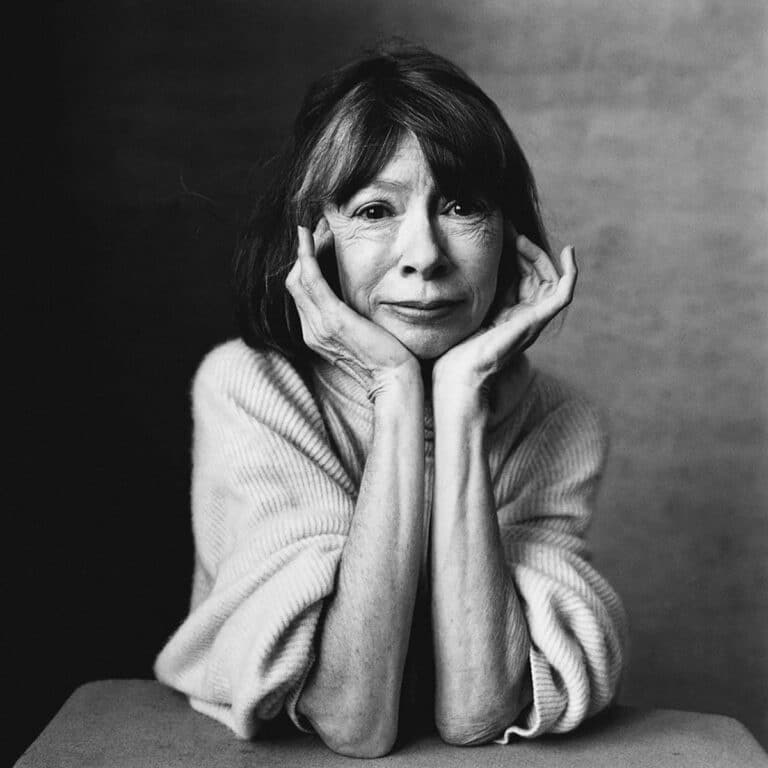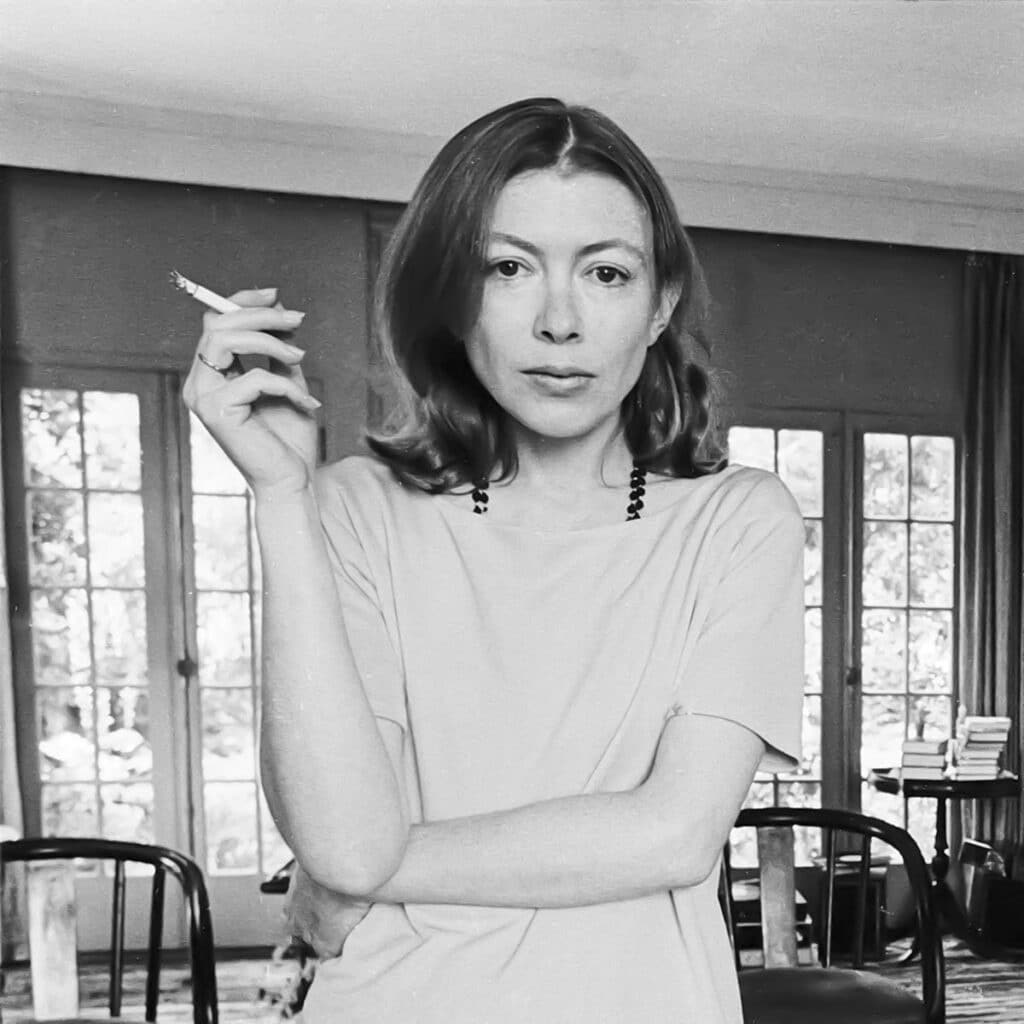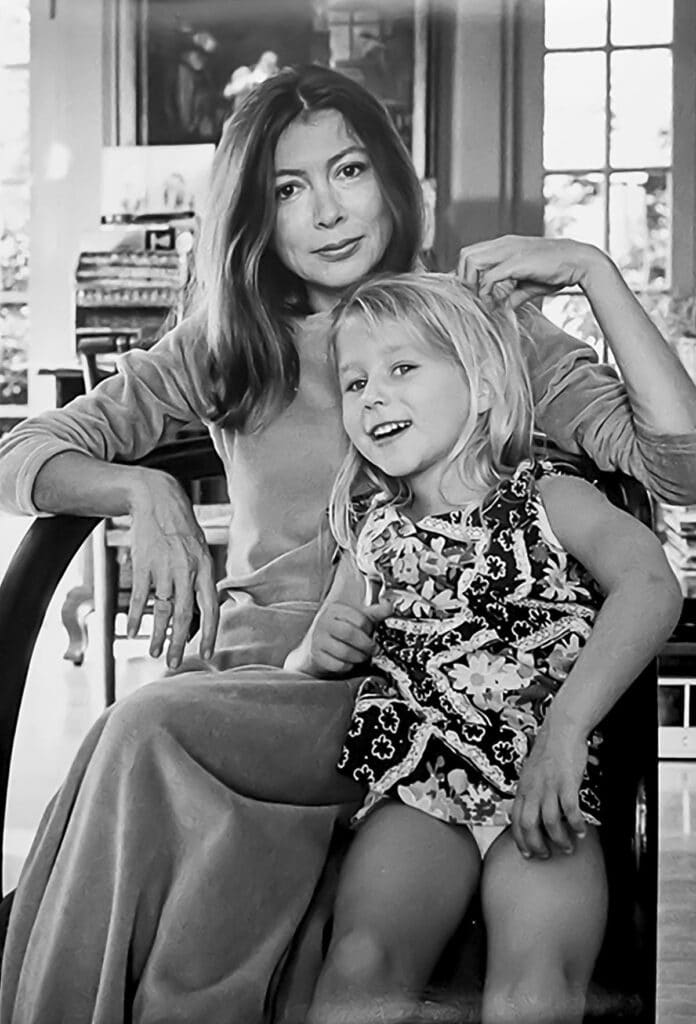
Luminary’s most celebrated works written while a Malibu resident
Joan Didion, famed essayist, novelist, journalist, memoirist, and screenwriter, passed away on Dec. 23 in her Manhattan apartment.
Didion may not have put Malibu on the map, but her cool, unflinching voice will forever be enshrined in the public sensibility. “The hills are scrubby and barren, infested with bikers and rattlesnakes, scarred with cuts and old burns and new R.V. parks. For these and other reasons, Malibu tends to astonish and disappoint those who have never before seen it, and yet its very name remains, in the imagination of people all over the world, a kind of shorthand for the easy life. I had not before 1971 and will probably not again live in a place with a Chevrolet named after it.”
A fifth-generation Californian born in Sacramento, Didion parlayed an essay contest win while at UC Berkeley into an entry-level position at Vogue magazine in New York City. There she rose to associate features editor and was trained in a journalistic rigor and terseness that helped define her best work.

She returned to California in 1964 with her writer husband, John Gregory Dunne, shortly after the publication of her first novel. Settling in Los Angeles, her first book of nonfiction, “Slouching Towards Bethlehem,” collected magazine pieces on such topics as Haight Ashbury and the Santa Ana winds and is considered a seminal work in New Journalism. In 1970 her Hollywood novel, “Play It As It Lays,” was published. In the same year, she and Dunne wrote the screenplay for “Panic In Needle Park,” which became Al Pacino’s first starring role. The Julian Wasser photo of her that year in front of her 1969 yellow Corvette Stingray made her a style icon.
In the early 1970s, Didion, Dunne, and their young daughter moved to Malibu. Their house on Pacific Coast Highway was so dilapidated they hired a young carpenter, Harrison Ford, to help with its disrepair. Ford, who went on to become one of the biggest box office stars in Hollywood, stayed friends with the family. In 1978 Didion and Dunne decamped to Brentwood. But it was in Malibu where Didion wrote some of her most memorable works, including 1977’s “A Book of Common Prayer” and her 1979 collection of essays “The White Album.”
After leaving California in 1988, Didion undertook political reportage and, after Dunne’s death, wrote what many consider the greatest description of widowhood, “The Year of Magical Thinking.” She was introduced to a new generation with the 2018 Netflix documentary on her life, “The Center Will Not Hold,” directed by her nephew Griffin Dunne.

The concluding essay to “The White Album,” entitled “Quiet Days in Malibu,” describes the Malibu of the 1970s: “In the part of Malibu where I lived from January of 1971 until quite recently we all knew one another’s cars, and watched for them on the highway and at the Trancas Market and at the Point Dume Gulf station. We exchanged information at the Trancas Market. We left packages and messages for one another at the Gulf station. We called one another in times of wind and fire and rain, we knew when one another’s septic tanks needed pumping, we watched for ambulances on the highway and helicopters on the beach and worried about one another’s dogs and horses and children and corral gates and Coastal Commission permits.”
While much in Malibu has changed, we still worry about one another’s families and Coastal Commission permits. And some old-timers swear that if you go to PCH at golden hour and squint toward the west a little past Decker, sometimes you can see a faded yellow Corvette Stringray.